In 2015, thenumber of migrantssurpassed 244 million, growing at a ratefasterthan the world’spopulation. However, there are roughly 65 millionforcibly displaced persons, includingover 21 millionrefugees, 3 millionasylumseekers and over 40 millioninternally displaced persons.
Migration and peace are thus closely related in accordance with the outcome of the International Conference on Population and Development (1994)and the Program of Action of the World Summit for SocialDevelopment (1995).
Equality before the law and non-discrimination in the enjoyment of human rights are structural principles of international human rights law has been outlined in the International Covenants on Human Rights, the Convention on the Rights of the Child, the Convention on the Elimination of All Forms of Racial Discrimination, the Convention on the Elimination of All Forms of Discrimination against Women, the Convention on the Protection of the Rights of All Migrant Workers and Members of Their Families, ILO Conventions No. 143 and 151 on migrant workers, ILO Convention concerning Migration for Employment, the UN Convention against Transnational Organized Crime and the outcome of the Durban Review Conference.
The World Conference on Human Rights held in Vienna in 1993 expressed the obligation to develop strategies addressed to the root causes of the movement of refugees as follows:
“… recognizes that, in view of the complexities of the global refugee crisis and in accordance with the Charter of the United Nations, relevant international instruments and international solidarity and in the spirit of burden-sharing, a comprehensive approach by the international community is needed in coordination and cooperation with the countries concerned and relevant organizations, bearing in mind the mandate of the United Nations High Commissioner for Refugees.
The Declaration and Programme of Action on a Culture of Peace of 1999 also focused its attention on the actions to promote the rights of refugees, displaced persons and migrants:
“actions to advance understanding, tolerance and solidarity: … support actions that foster tolerance and solidarity with refugees and displaced persons, bearing in mind the objective of facilitating their voluntary return and social integration; support actions that foster tolerance and solidarity with migrants” and “actions to promote international peace and security … support initiatives, at the national, regional and international levels, to address concrete problems arising from post-conflict situations, such as demobilization, reintegration of former combatants into society, as well as refugees and displaced persons, weapon collection programmes, exchange of information and confidence-building”.
Pursuant to Human Rights Council resolution 32/14, in which the Council requested the United Nations High Commissioner for Human Rights (OHCHR), as Co-Chair of the Global Migration Group Working Group on Migration, Human Rights and Gender, the High Commissioner describes in its report A/HRC/34/31 of 2017 the rationale for and progress of the principles and practical guidance to date. He presents a draft set of principles derived from international human rights law and related branches of law, as applicable. The draft guidelines are designed to provide guidance derived from international best practice to States and other stakeholders on upholding the human rights of migrants in vulnerable situations.
On 19 September 2016, the General Assembly of the United Nations held a High-Level Plenary Meeting on Addressing Large Movements of Refugees and Migrants, which culminated with the adoption of the New York Declaration, which outlines steps towards the adoption of a global compact for safe, orderly and regular migration and a global compact on refugees in 2018. To follow-up on the New York Declaration, the Global Migration Group (GMG), an inter-agency cooperation mechanism consisting of 20 entities of the United Nations (UN) system, will organize meetings to discuss the role of the UN system in implementing the migration-related commitments in the New York Declaration.
The UN Summit for Refugees and Migrants was the first time that world leaders came together at the United Nations to address issues affecting both refugees and migrants. The New York Declaration for Refugees and Migrants, the outcome document of the Summit, expresses the political will of world leaders to save lives, protect rights and share responsibility on a global scale.
The Declaration has set in motion a much longer process focused on migration providing an opportunity to work towards a global compact on safe, regular and orderly migration that upholds the human rights of migrants and their families, irrespective of migration status, enhances their wellbeing, and promotes inclusive growth and sustainable development in societies of origin, transit and destination. The Compact will present a range of principles on international migration and will offer a framework for comprehensive international cooperation.
Ambassador Swing, Director of the International Organization for Migration, said in the context of the High-Level Plenary Meeting held in New York: “We focus too much on problems; too little on solutions. In recent times, we have, arguably, become better at addressing immediate needs, but we struggle to develop a comprehensive, long term vision for human mobility.” He added that migration was inevitable, necessary and desirable.He also noted: “IOM’s vision is for a world in which migration is well-governed, in which migrants move as a matter of real choice and not desperate necessity, and in which the rights of migrants are protected throughout their migratory process.”
In accordance with the UNHCR, the New York Declaration is important for refugees because all 193 member states of the United Nations: reaffirmed the enduring importance of the international refugee protection regime; committed fully to respect the rights of refugees; pledged to provide more predictable and sustainable support to refugees and the communities that host them; and, agreed to expand opportunities to achieve durable solutions for refugees.
The New York Declaration addresses large movements of refugees and migrants. A refugee is defined in international law to be a person who is outside his or her country of origin due to a well-founded fear of persecution for reasons of race, religion, nationality, membership of a particular social group or political opinion. The person is in need of international protection when his or her country of origin is unable or unwilling to provide protection from the persecution or serious harm feared.
This definition is at the heart of the 1951 Refugee Convention and its Protocol and is also reflected in regional instruments. It has broad scope and relevance. It encompasses those who flee individual persecution, as well as those fleeing armed conflict or violence associated with one or more of the above-noted grounds. It includes those fleeing State and non-State actors and has been the basis for providing protection for, amongst others, those escaping war, conflict, human rights abuses, gang violence, domestic abuse and other forms of serious harm on the basis of their age or gender identity or orientation.
In the XXI century migrants and refugees are facing the following challenges, in accordance with the New York Declaration:
Firstly, the special needs of all people in vulnerable situations who are travelling within large movements of refugees and migrants, including women at risk, children, especially those who are unaccompanied or separated from their families, members of ethnic and religious minorities, victims of violence, older persons, persons with disabilities, persons who are discriminated against on any basis, indigenous peoples, victims of human trafficking, and victims of exploitation and abuse in the context of the smuggling of migrants (para. 22).
Secondly, the response to large movements of refugees and migrants should mainstream a gender perspective, promote gender equality and the empowerment of all women and girls and fully respect and protect the human rights of women and girls. Combatingthe sexual and gender-based violence to the greatest extent possible is mandatory. States are obliged to provide access to sexual and reproductive health-care services, as well, as, to tackle the multiple and intersecting forms of discrimination against refugee and migrant women and girls (para. 31).
Thirdly, States should protect the human rights and fundamental freedoms of all refugee and migrant children, regardless of their status, and giving primary consideration at all times to the best interests of the child. This will apply particularly to unaccompanied children and those separated from their families; States will refer their care to the relevant national child protection authorities and other relevant authorities. States are also obliged to comply with their obligations under the Convention on the Rights of the Child. Consequently, they will work to provide for basic health, education and psychosocial development and for the registration of all births on our territories (para. 32).
Fourthly, with a view to disrupting and eliminating the criminal networks involved, States will review their national legislation to ensure conformity with our obligations under international law on migrant smuggling, human trafficking and maritime safety. They should implement the United Nations Global Plan of Action to Combat Trafficking in Persons and to establish or upgrade, as appropriate, national and regional anti-human trafficking policies. There are some regional initiatives such as the African Union-Horn of Africa Initiative on Human Trafficking and Smuggling of Migrants, the Plan of Action Against Trafficking in Persons, Especially Women and Children, of the Association of Southeast Asian Nations, the European Union Strategy towards the Eradication of Trafficking in Human Beings 2012-2016, and the Work Plans against Trafficking in Persons in the Western Hemisphere (para. 36).
Fifthly, States pledged to combating xenophobia, racism and discrimination in our societies against refugees and migrants. States will take measures to improve their integration and inclusion, as appropriate, and with particular reference to access to education, health care, justice and language training. They recognize that these measures will reduce the risks of marginalization and radicalization. National policies relating to integration and inclusion will be developed, as appropriate, in conjunction with relevant civil society organizations, including faith-based organizations, the private sector, employers’ and workers’ organizations and other stakeholders. They also noted the obligation for refugees and migrants to observe the laws and regulations of their host countries (para. 39).
The New York Declaration on migrants and refugees underscored the obligation of States to create conditions that allow communities and individuals to live in peace and prosperity in their homelands.
Migration should be a choice, not a necessity. In this line, international community should implement the 2030 Agenda for Sustainable Development, whose objectives include eradicating extreme poverty and inequality and the promotion of peaceful and inclusive societies based on international human rights and the rule of law, creating conditions for balanced, sustainable and inclusive economic growth and employment, combating environmental degradation and ensuring effective responses to natural disasters.
Finally, international community pledged to address the root causes of such crisis situations and to prevent or resolve conflict by peaceful means.








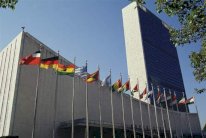

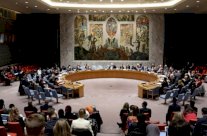

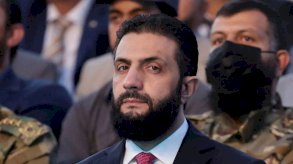
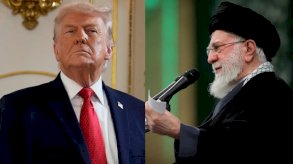


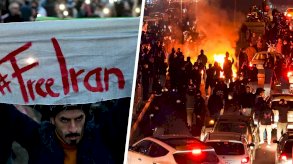
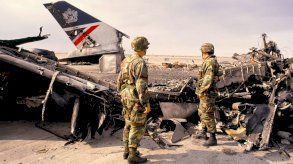

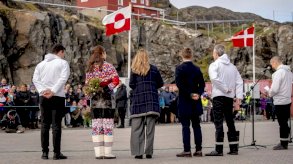
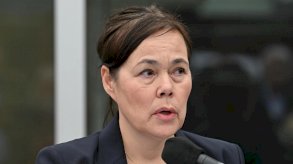
التعليقات